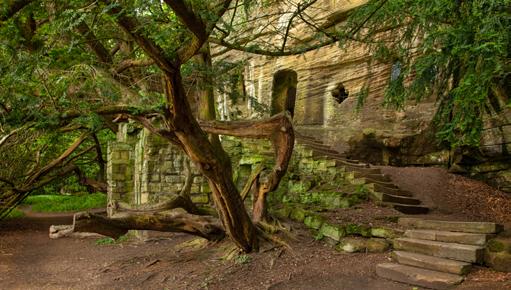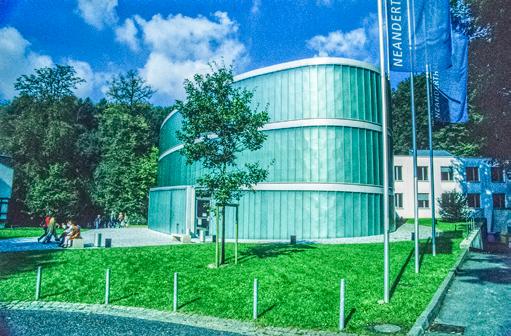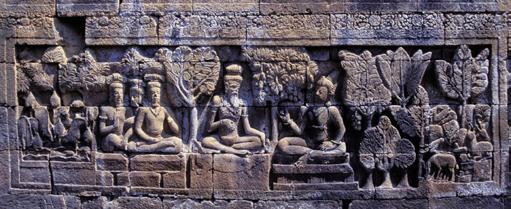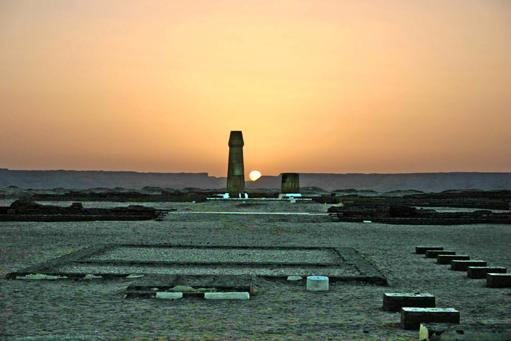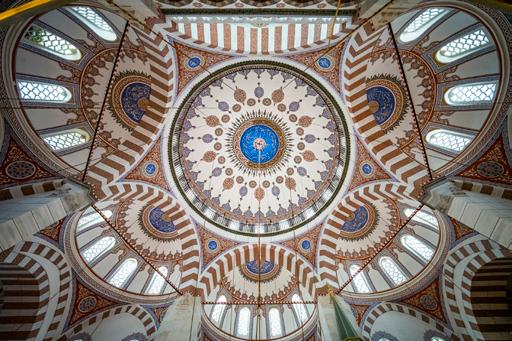
6 minute read
The Domes of Istanbul
FEATURES The Domes of Istanbul
JOHN EATON ARPS
My interest in historical architecture was inherited from my father, brother and son all architects and attending a school adjacent to Chester Cathedral.
Many years later, on retirement, this came to the fore in a major photographic project to document the interiors of all the English medieval cathedrals made even more challenging by the fact that I now live in California!
When the opportunity to visit Istanbul came about one of my priorities was to explore the magnificent mosques in that city, especially those built by Sinan and his followers. One of the primary focal points for me was the vast open space of the interior enclosed by the immense dome and, in particular, its construction and decoration i.e. look up! The following images from several of the mosques illustrate some of the differences in construction and decoration of domes that fulfill a common purpose and function. The architect, Sinan
Most of the mosques in Istanbul are the work of Sinan, or one of his apprentices. Sinan was born around 1488-90 to a Christian family (Armenian or Greek) in a small Turkish village in Anatolia. In his teens he joined the Janissaries and spent the next three decades serving in multiple military campaigns across the Ottoman empire. He had received some training in carpentry and building and during the campaigns developed a reputation as an innovative and skilled engineer and, as a result, was promoted regularly. In 1539 he was promoted to Royal Chief Architect, a position he held until his death in 1588. Sinan was the chief architect and civil engineer for Suleiman the Magnificent, Selim II, and Murad III. Although responsible for around 400 buildings and many outstanding engineering feats, notably the aqueducts and water-supply to Istanbul, it is for his magnificent mosques that Sinan is primarily remembered.
Eyup Sultan
His training as an army engineer led him to approach architecture from an empirical rather than a theoretical point of view. Starting with the Byzantine church as a model, Sinan adapted the designs of his mosques to meet the needs of
Muslim worship, which requires a large open space for common prayer. As a result, the huge central dome became the focal point around which the design of the rest of the structure was developed.
Sinan pioneered the use of smaller domes, half domes, and buttresses to lead the eye up the mosque’s exterior to the central dome at its apex, and he used tall, slender minarets at the corners to frame and support the entire structure.
Sinan’s last apprentice, Mehmed Agha, became
Chief Architect in 1606 and, until his death in 1617, worked primarily on his great masterpiece, the Sultanahmet mosque also known as the Blue mosque for its use of Iznik tiles. In Sultanahmet,
Mehmed Agha combined the symmetry and scale of Hagia Sophia with the innovations of Sinan in the use of domes and semi-domes to create and support a beautiful, light and airy space.
Atike Valide
Located on the Anatolian side of the Bosphorus, this mosque formed part of a large complex that also included a madrasa, a college, a school for Quran recitation, an elementary school, a dervish convent and a hospital complex. It was built for Nurbanu Sultan, wife of Selim II, by Sinan and completed in 1586. The main space is covered by
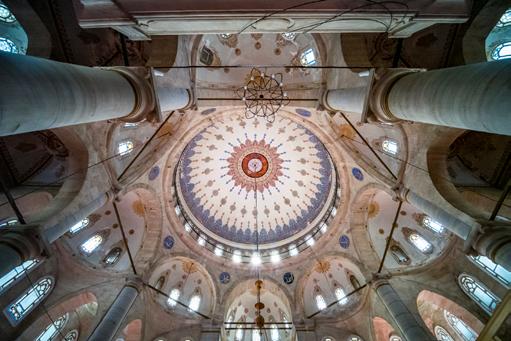
a central dome of 42 ft in diameter, supported on six arches arranged in a hexagon with two freestanding columns. The space is expanded by five semi-domes, one of which contains the mihrab, and the arch on the north side is filled with a flat wall which contains the entrance portal.
Eyup Sultan
The Eyup Sultan Mosque is Turkey’s oldest and most sacred mosque and was the traditional site for the coronation ceremony of the Ottoman Sultans, where the new sultan was girded with the sword of Osman. A mosque complex was originally constructed on the site in 1458 only five years after the conquest of Constantinople in 1453. However, by the end of the 18th century the mosque was in a ruinous state, perhaps as a result of earthquake damage, and in 1798 sultan Selim III ordered the whole structure other than the minarets to be pulled down and rebuilt. This work was completed in 1800.
Sehzade
Sinan’s first truly important architectural commission was the Sehzade Mosque, commissioned by Suleiman the Magnificent in memory of his favorite son, completed in 1548. Like many of his mosque constructions, the Sehzade Mosque has a square base upon which rests a large central dome flanked by four half domes and numerous smaller, subsidiary domes.


Sehzade, the superstructure is supported by four massive, but still elegant, free-standing octagonal fluted piers and four piers incorporated in each lateral wall. In the corners, above roof level, four turrets serve as stabilizing anchors.
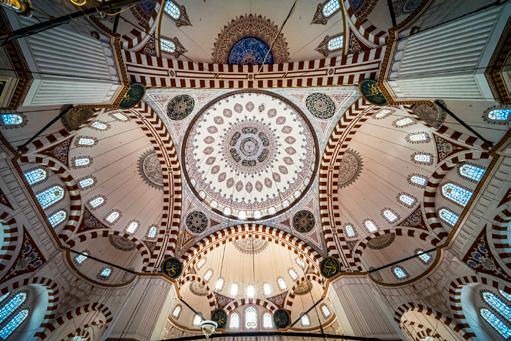
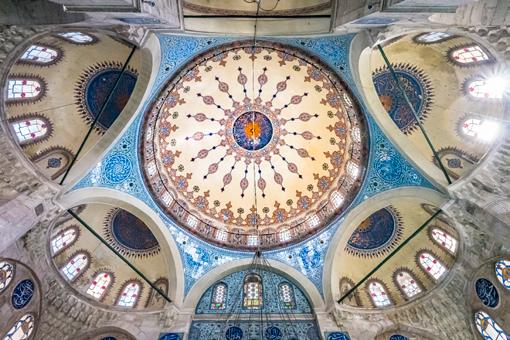
Sultanahmet
The coherent concept for the Sehzade Mosque was markedly different from the additive plans of traditional Ottoman architecture and confirmed
Sinan as an important, innovative architect.
Sokollu-Ismihan
This mosque complex is named after its patrons, the grand vizier Sokullu Mehmed Pasa and his wife, Ismihan Sultan, daughter of Selim II, and was completed by Sinan around 1571-72. The complex included a mosque, madrasa, convent, and a reservoir with street fountains. The interior is famous for its use of Iznik tiles in a wide variety of blue, red and green floral designs. Locals regard this mosque as one of Istanbul’s hidden treasures, a beautiful building, close to Sultanahmet, but without the crowds of tourists!
Suleymaniye
Suleymaniye is one of the largest mosques ever built in the Ottoman Empire and is considered by many scholars to be Sinan’s finest work. By 1550, Suleiman the Magnificent was at the height of his powers. Having built a mosque for his son (Sehzade), he felt it was time to construct his own imperial mosque, an enduring monument larger than all the others. It was set on an immense man-made terrace at the top of a hill, surrounded by quiet parkland, dominating the skyline by the Golden Horn. Sinan wanted to achieve the largest volume under a single central dome and at Süleymaniye he

created a massive central dome, with a diameter of over 100 ft, that is pierced by 32 openings, thus giving the dome the effect of lightness while also copiously illuminating the mosque’s interior. Besides the place of worship, it contains a vast social complex comprising four madrasas, a large hospital and medical school, a kitchen-refectory, and baths, shops, and stables. Sinan, now heading a formidable department with a great number of assistants, finished this formidable task in seven years and, through this monumental achievement, he gained wide international recognition.
Sultanahmet
The Sultanahmet Mosque, known as the Blue Mosque (because of its abundant use of blue Iznik tiles), is the central element of the complex built by Sultan Ahmed I from 1603-1617. The mosque is composed of a large prayer hall unified under a single dome preceded by a courtyard to the northwest: it has five main domes, six minarets, and eight secondary domes. The design is the culmination of two centuries of Ottoman mosque development. It incorporates many Byzantine elements of the neighboring Hagia Sophia with traditional Islamic architecture and is considered to be the last great mosque of the classical period. The architect, Mehmed Agha, synthesized the ideas of his master Sinan, aiming for overwhelming size, majesty and splendor.

